Unlike his predecessors and successors, this one king did not hide from his premarital adventures. He was still in touch with the former concubine. And he made the son a bishop.
Jan was born in 1499 as the firstborn child of Zygmunt Jagiellończyk (better known as Zygmunt the Old ) and his many years of love - Katarzyna Ochstat, known as Telniczanka. The romance of the prince and the Moravian beauty probably lasted from around 1498 and continued, free from rumors and scandals, at least until the coronation of the Jagiellonian. Even then, however, the king did not intend to distance the family from him and he wanted to ensure the best possible future for the children.
Bastard but dear
Zygmunt, the fifth son of Kazimierz IV Jagiellon, inherited the Polish and Lithuanian thrones in 1506 after the childless death of his brother Alexander. He did not intend to hide his family from the world, so he brought her to Krakow to take care of them on the spot. He spent considerable sums of money to raise his son. He also gave him expensive gifts from time to time:here 4 groszy for Christmas, there fur for the winter made of foxskin ...
Of course, there was no question of John being officially recognized as the heir to the throne, but there was also no obstacle for the king to otherwise provide for his beloved (and so far only) son a prosperous life. He assigned the boy to a spiritual career which he intended to direct so that he could, thanks to the influence and royal protection, reach the highest ecclesiastical dignities.
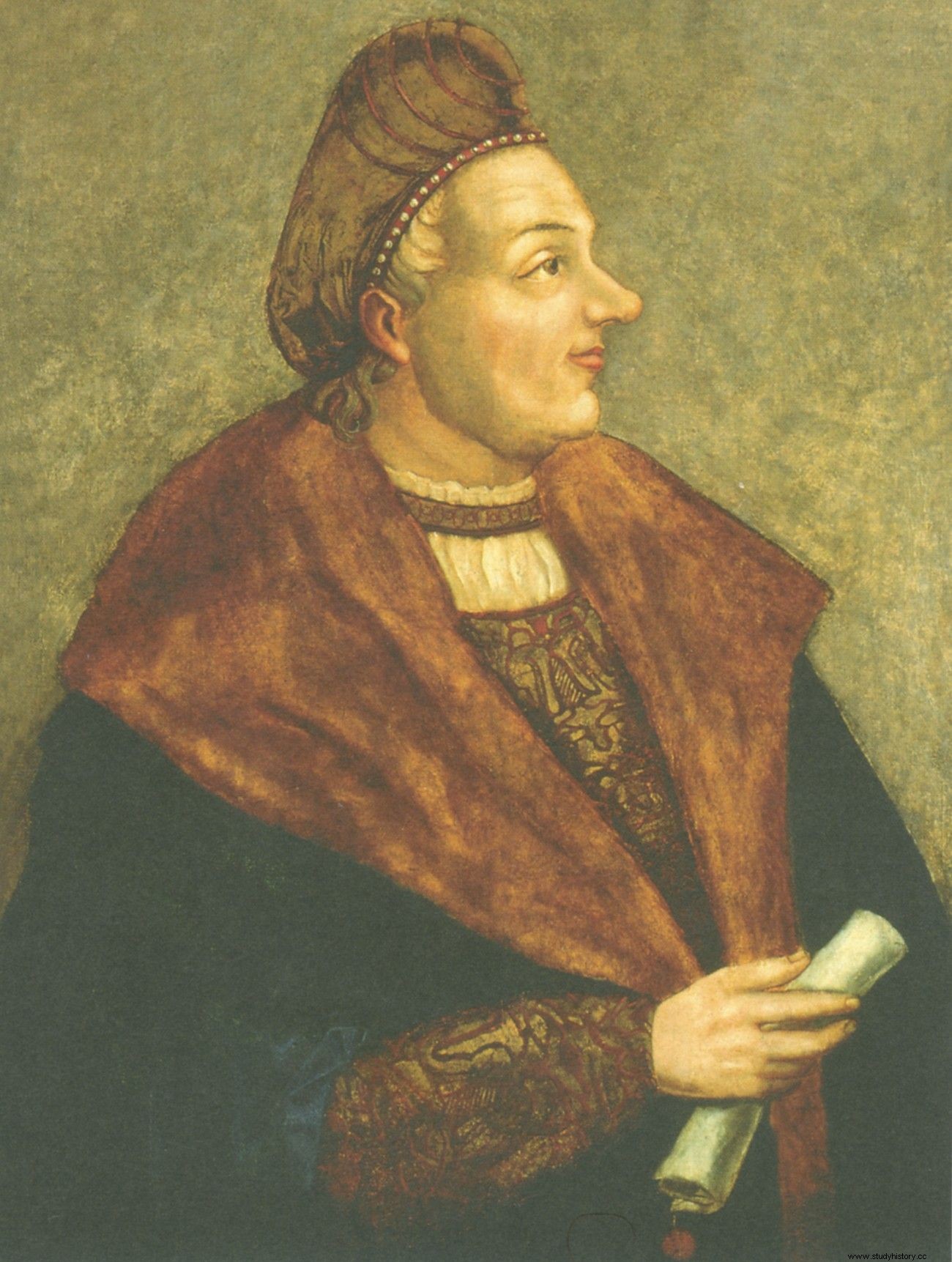
Zygmunt made every effort to ensure that his illegitimate son had a good start in life.
Meanwhile, the boy's position at court was not the easiest one. Who exactly was he? There was no dare to call him a prince, because in fact he was not entitled to this title. It was also not very appropriate to call him a prince. Anyway, he did not hide in his father's seat, but under the care of Keyser, the councilor of Kraków. She fed him and raised him by a hired nurse.
It was only when Jan was a few years old that his mother took him over to raise him. And the father over time gave him a new title, indicating the lineage and origin. From then on he was called "John of the Dukes of Lithuania" ( Joannes de ducibus Lithuaniae ) which harmonized perfectly with the subsequent dignities received. The king arranged for a dispensation so that his firstborn could start a career in the Church and granted him the dignity of nobility. As a result, in 1510, Jan became a canon of Krakow, and two years later he went to study in Bologna, where he studied canon and Roman law. At that time, he was already the parish priest of Płock and Poznań. What's more, and in the years 1518-1519 he was one of the royal secretaries. He was promoted exceptionally quickly, as historian Julian Bartoszewicz emphasizes when he wrote that Jan:
[…] put on a priest's dress very young. [...] He was not yet mature, because he was barely reaching his childhood age, and the church dignities adorned him, began to crown the temples of a child-priest, as if of some gray-haired man of merit.
 The creation of the article was inspired by a biographical novel by Magdalena Niedźwiedzka entitled "Bona" (Prószyński Media 2018).
The creation of the article was inspired by a biographical novel by Magdalena Niedźwiedzka entitled "Bona" (Prószyński Media 2018).
One wonders how the boy himself endured this situation? If you believe Father Wincent Przyałgowski, that's great. "From childhood he was trained to the clergy, he developed the character of a quiet and modest soul, it seems that he was born for prayer and a lonely conversation with God" - says the clergyman.
Un ordained bishop and king's governor
Despite this pious attitude, in 1519 John was still without priestly ordination (he received it only in 1531), but he was a well-educated and promising young man. The proud father was already looking for a warm job for him. At first he thought about Hungary, but eventually decided to go to Lithuania, where it was much easier for him to carry out his will. So when Bishop Wojciech Radziwiłł died in Vilnius on July 5, 1519, Zygmunt did not delay even a moment and sent him to Rome, where Leo X sat on the throne of Peter, the following letter:
Most Holy Father! To the now vacant bishopric of Vilnius, in our Lithuanian principality, we present to Your Holiness honorable and honorable John of Lithuanian princes, a canon of Płock, convinced that he will be useful to the church and the country . Therefore, we beg Your Holiness to deign to confirm him in this episcopate. Due to the fact that this bishopric was destroyed by long wars, you want to allow the revenues of the Płock canon to remain with him.
[...] Whatever your Holiness deigns to do with ordinary goodness, we ask you as much as possible, for which we will serve Your Holiness with our permanent respect and affection. Commending ourselves and our state, Your Holiness, we wish you to stay healthy for the longest time.
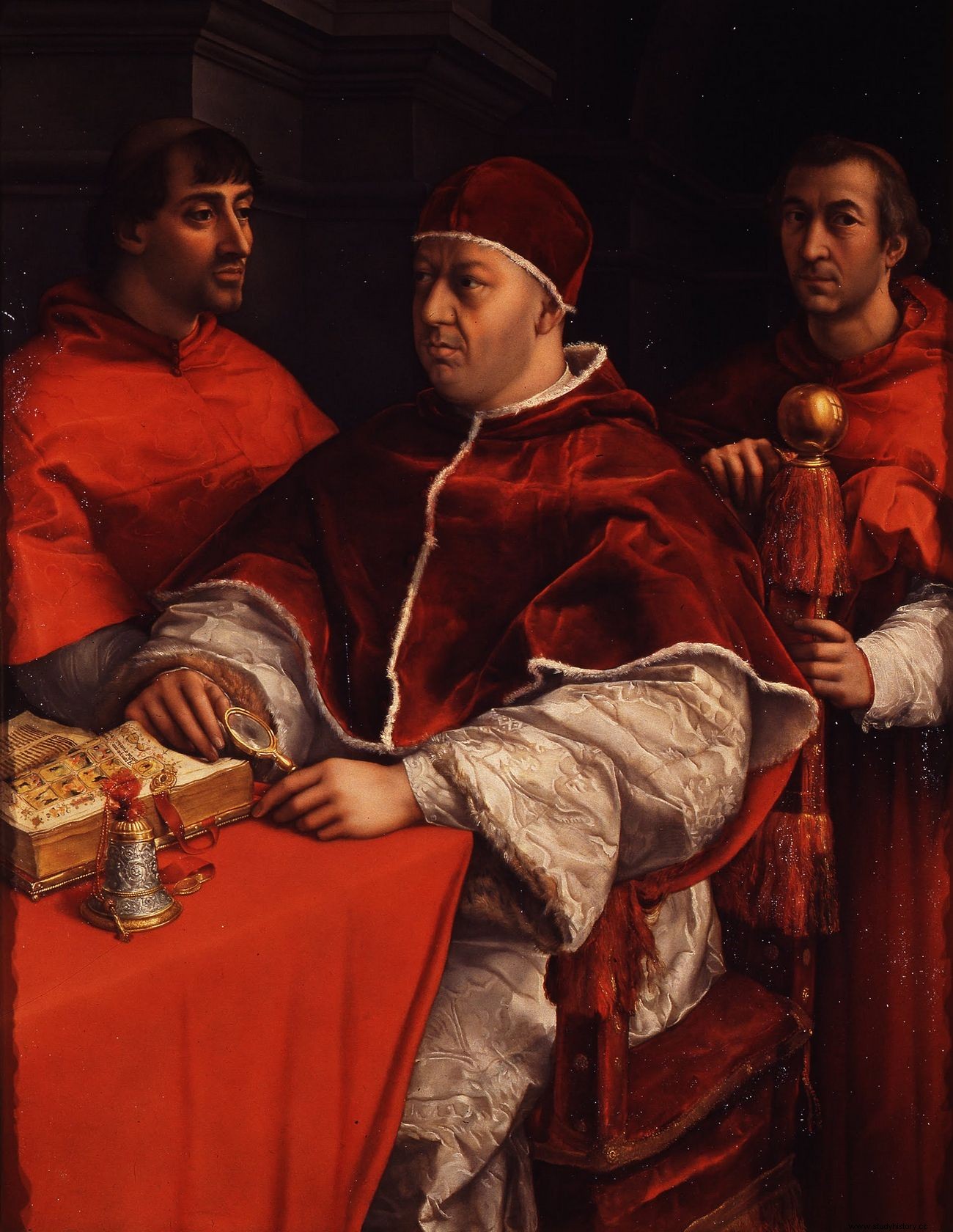
Zygmunt made sure that it was John who was appointed by Pope Leo X (in the portrait by Raphael) as the next bishop of Vilnius.
Thus, in one move, Zygmunt ensured his son, who was only 21 years old, not only to be a bishop, but also to maintain a substantial income from the previous benefice. Lithuanian magnates turned their noses at this fact. John was seen not so much as a young and talented governor, but as a fatherly governor. Besides, it was right:the new bishop of Vilnius was in close contact with his father and his wife, Bona Sforza. In 1525, he even made a pilgrimage with them to Szczepanów, the birthplace of St. Stanislaus.
Telniczanka's son also supported efforts to weaken the position of the Lithuanian nobility and regain appropriated grand-ducal goods. At the same time, accumulated enormous fortune himself and quickly became one of the largest landowners in the grand duchy . At the same time, he took care of the development of industry by building brickworks and lime kilns, managed customs duties and salt chambers, and supervised lessees. He turned out to be a very good administrator of the capitular and episcopal estates, which he kept increasing. He expanded parishes, consecrated churches, and from 1522 he rebuilt the Vilnius cathedral. The latter, after a fire in 1530, was rebuilt partly with his own funds.
It is worth adding that Jan introduced new dignities to the cathedral chapter - scholastic and cantor. From 1525, he focused on putting matters in order in the church, reconciling disputes and mutual interests. An example may be the dispute between a cathedral priest and a sacristan about living sacrifices brought to churches by the faithful. The bishop confirmed the judgment of the chapter that the latter was entitled to them.
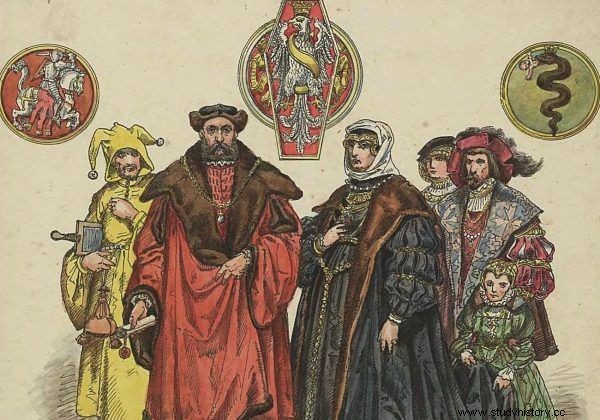
Jan was a staunch ally of his father and Bona Sforza.
The head of the Vilnius diocese also rebuked the local Dominicans for failing to fulfill the preaching duties that were imposed on their congregation by the law of Bishop Tabor. Finally, he established and organized the solemn services in the cathedral. And in 1526 he convened a diocesan synod, the goals of which he presented to his subordinate clergy:
Today we see and we are surprised that in this W. Duchy of Lithuania there are so many Christian rites, so many differences and changes in the profession of faith; every day we encounter strange errors which, unfortunately, have infected our entire clergy.
By these errors, lay people drink, and without learning, they acquire bad habits and vicious, wicked manners, and each day they face more and more dangers for the soul, until they fall under church curses , because contrary to the memories of our great-grandfathers, they lead a life full of crimes .
Interestingly, one of the effects of the synod was that the Church in Vilnius dealt with education. Church schools were ordered and funds were allocated for town and village teachers. Thanks to the bishop's initiative, they translated the Holy Bible to their students not only in Lithuanian, but also in Polish.
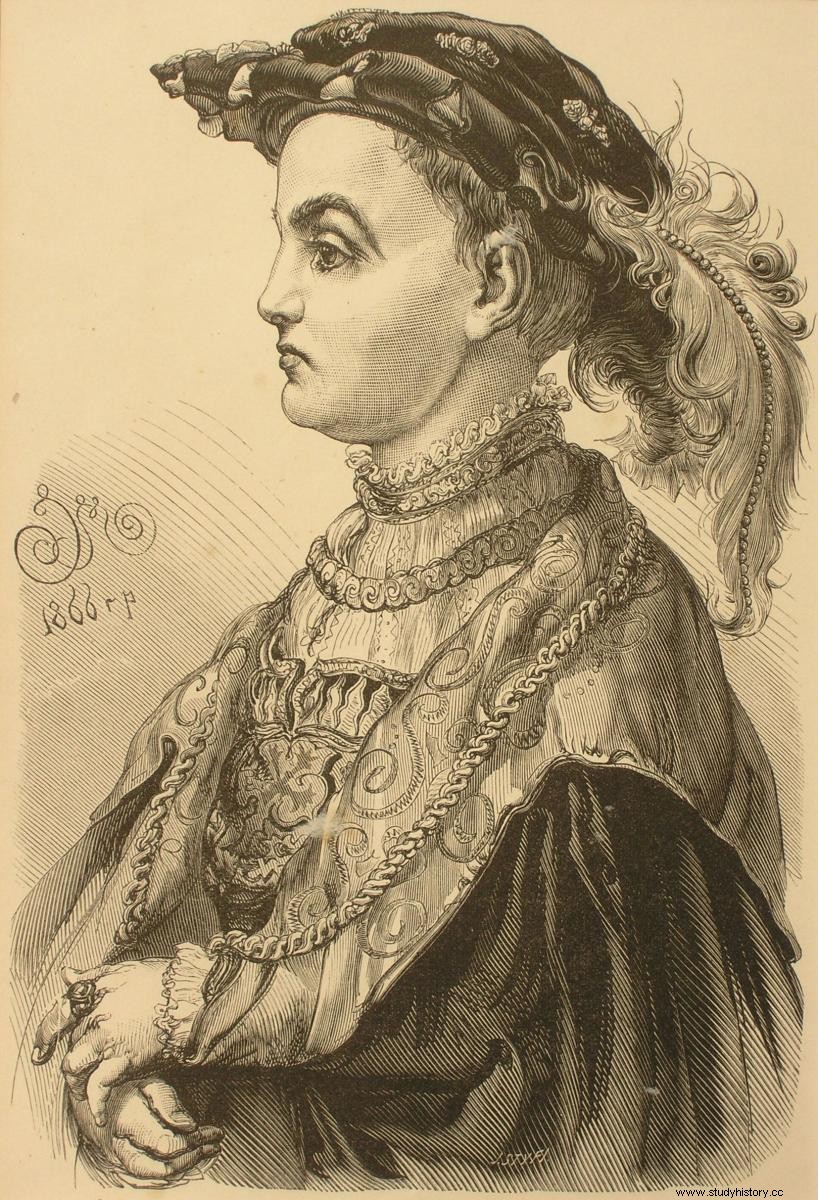
As the bishop of Vilnius, John helped to raise the grand-duke, who was still a child, to the throne. half-brother of Zygmunt August.
Caring for his sheep, Jan did not forget about his family. Along with him, his widowed mother came to Vilnius, towards whom he showed a truly filial indulgence. This irritated the Lithuanian lords to such an extent that one day the adventurous Stanisław Radziwiłł attacked the young bishop with a saber and wounded his hand! Katarzyna, on the other hand, did not care about human talk. Until her death in 1528, she was constantly entangled in some scandals, giving more and more reasons for rumors.
A year after the loss of his mother, in 1529, the king's firstborn son turned thirty. According to the law, only now should he seek the bishop's dignity, which he has held for a decade. Meanwhile, however, he focused his attention on his half-brother Sigismund Augustus - the heir to the crown, whom he helped to elevate to the grand-ducal throne. He himself, to the great dissatisfaction of the Lithuanian nobility, headed by the Radziwiłł and Gasztołd family, and on behalf of the king and queen, managed the entire policy of the grand duchy, maintaining diplomatic relations and interested in the country's defense.
As the bishop of Vilnius, Jan was a member of the princely council. He took advantage of this privilege eagerly. He also took part in the deliberations of the Lithuanian Seym. Whenever a king appeared in Lithuania, his son followed him; he often visited Wawel.
A cup of bitterness in Poznań
Jan's episcopal rule in the grand-ducal capital was active and fruitful, but it probably had a negative effect on his health. After all, he exercised it in a difficult and reluctant environment. So when Piotr Tomicki, the bishop of Kraków and the chancellor, died in 1535, and he was replaced by the bishop of Poznań, King Zygmunt saw the opportunity to move his beloved child to a quieter place. He immediately sought approval for his nomination by Pope Paul III, and then went to Vilnius to personally deliver the good news.
 The creation of the article was inspired by a biographical novel by Magdalena Niedźwiedzka entitled "Bona" (Prószyński Media 2018).
The creation of the article was inspired by a biographical novel by Magdalena Niedźwiedzka entitled "Bona" (Prószyński Media 2018).
In 1536, John officially took over the new diocese, no less prestigious than the previous one. His ceremonial entry into Poznań took place on March 24, 1537. The former bishop of Vilnius was then 38 years old. In appearance, Julian Bartoszewicz writes, he resembled his father:
He was tall, approachable, dignified and tactful. His face had pleasant features, marked by chivalrous valor. The resemblance to King Sigismund was always evident in him and immediately struck, although a trained eye could see a lot of difference. The family types of the Jagiellonian tribe are kept in the prince. He grew a long blackish beard.
The only thing that Jan did not inherit from his Jagiellonian ancestors was longevity. As Wincenty Przyałgowski bitterly states,
From the very birth, the star of happiness shone on him constantly, he quickly moved, under the protection of his father, to the highest office in the church; it was necessary for him to taste the cup of bitterness, otherwise Christ would not receive it for his glory [...] . ”
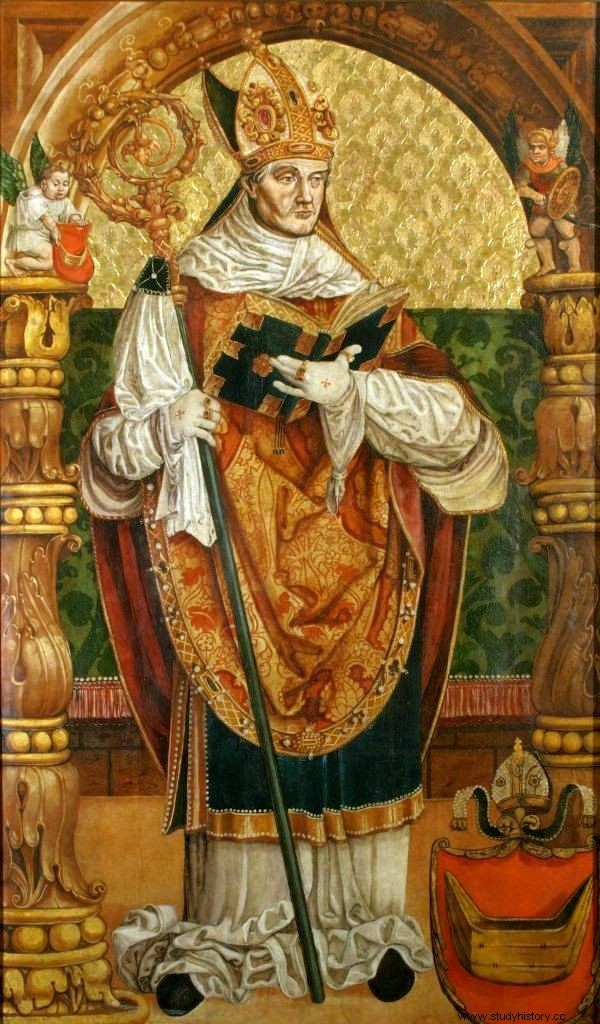
After the death of bishop Piotr Tomicki, the road to the dignity of the bishop of Poznań opened before Jan. However, he was not allowed to enjoy this dignity for long.
It was not possible for the bishop to enjoy the charms of Greater Poland. He died on February 18, 1538, still under forty, after suffering a four-day fever ( quartana fever ). ). Before his death, he made numerous records:he donated 300 ducats for the Vilnius cathedral, and many lands for his sister Beata, who was rumored to be the king's daughter.
In accordance with his wishes, he rested in the Vilnius cathedral, in the chapel he had founded, known as Januszowska. The funeral took place at the end of March, a year after Jan's arrival in Poznań. We don't know how the king reacted to his son's death, but judging by the way he treated his son throughout his life, he must have despaired of him.
Inspiration:
The article was inspired by a biographical novel by Magdalena Niedźwiedzka entitled Bona. Twilight of the Jagiellonians , Prószyński Media 2018.

